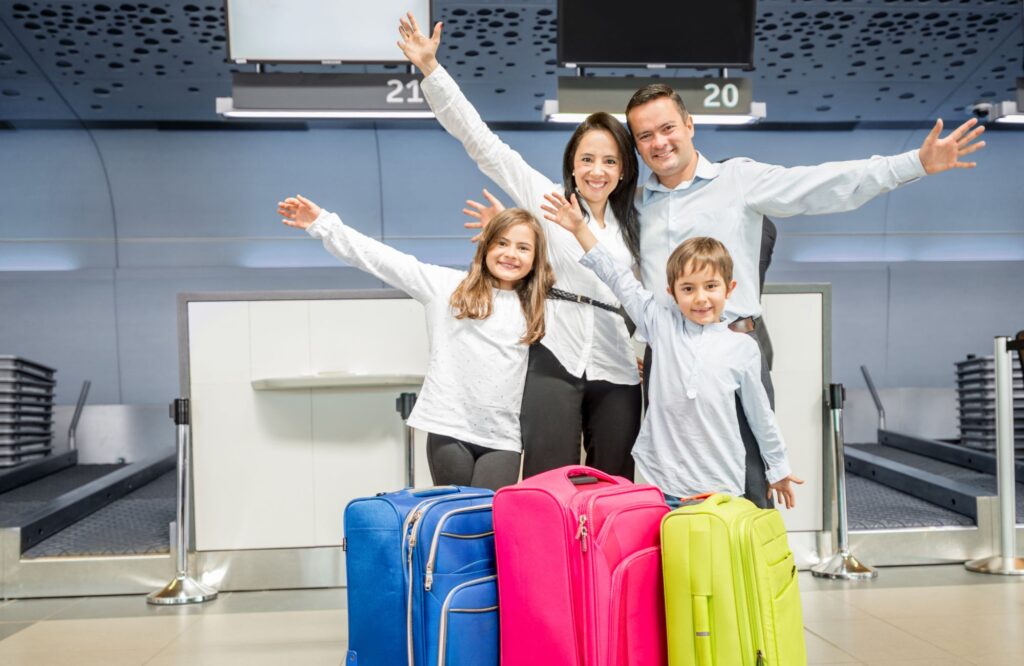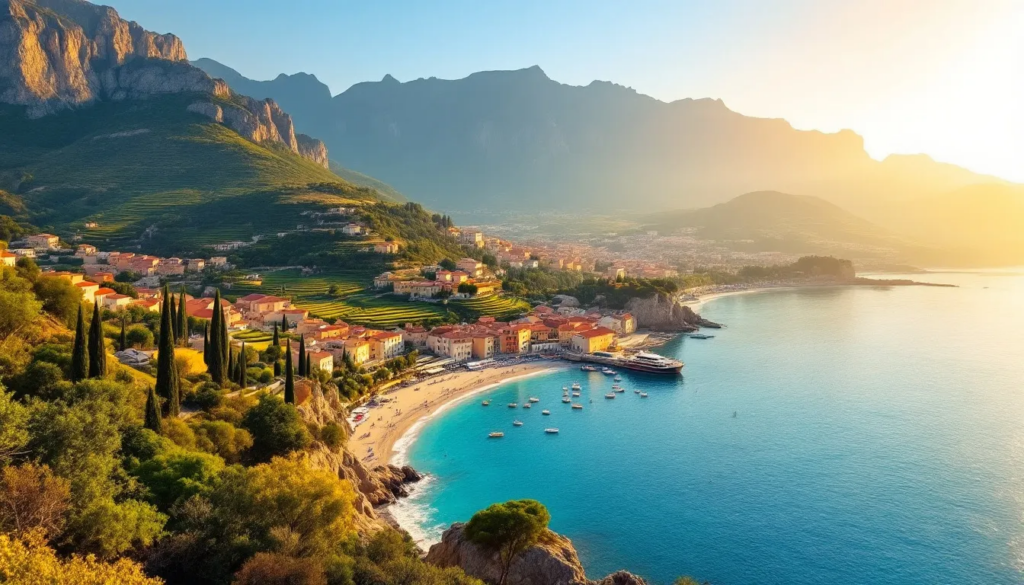A 2-week trip to Italy in 2025 can cost anywhere from $2,500 to $6,500 per person, depending on your travel style, the time of year you go, and the cities you visit. If you’re wondering how much a trip to Italy for 2 weeks really costs, the answer depends on more than just flight prices or hotel rooms; it’s about your itinerary, accommodation choices, activities, and how you manage daily expenses.
In this guide, we’ll break down the key expenses for a two-week trip to Italy, including flights, accommodation, sightseeing, and dining. We’ll also share expert tips on how to save money without missing out on Italy’s rich history, world-class restaurants, and stunning landscapes. From cost-effective options to splurge-worthy experiences, this comprehensive guide will help you create a realistic travel budget and enjoy your trip to Italy without surprises.
Average Cost of Traveling to Italy for 2 Weeks
The average total cost for two weeks in Italy depends heavily on whether you travel as a budget backpacker, mid-range explorer, or luxury traveler. Below is a quick look at daily and grand total estimates for each category in 2025. These figures include flights, accommodation expenses, local transportation, meals, and major attractions.
| Travel Style | Daily Cost (per person) | 2-Week Total (per person) |
|---|---|---|
| Budget Travelers | $125 | $1,750 |
| Mid-Range | $230 | $3,220 |
| Luxury | $460+ | $6,440+ |
After reviewing these costs, you might wonder: is Italy expensive compared to other countries in Europe? Italy is considered moderately priced, while some aspects can be costly, especially in major cities, there are plenty of budget options available. Compared to other countries in Europe, Italy’s travel expenses are generally on par with popular destinations like France or Spain, but can be more affordable than places like Switzerland or Scandinavia.
What affects these prices?
- Seasonality: Prices fluctuate significantly between high season (summer months) and low season.
- Destination mix: Popular cities like Rome, Venice, and Florence cost more than smaller towns in southern Italy or the Tuscan countryside.
- Travel style: Choosing budget hotels or vacation rentals over luxury resorts can cut costs by 30–50%.
- Activities: Experiences like a gondola ride in Venice, wine tasting in Chianti, or a cooking class in Bologna all add to your total cost.
Flight Costs to Italy
Your round trip ticket will likely be one of the largest single expenses. From the U.S., round trip ticket prices to Rome or Milan typically range from $650 to $1,200 in shoulder season and $1,000 to $1,600 during high season.
Booking early is essential to secure the best prices on a round trip ticket to Italy, especially during peak travel periods. From the UK or other European countries, flights can be as low as $100–$250 on budget airlines if booked early, especially for off-season travel.
Ways to save money on flights:
- Book flights at least 3–6 months in advance for better flight costs.
- Fly into a secondary airport like Bologna or Naples instead of Rome or Milan.
- Travel during shoulder season (April–May, September–October) for better prices.
Accommodation Costs
Where you stay makes a huge impact on your total cost. Hotel rooms in Italy vary widely between larger cities and smaller towns, and between high season and low season.
Types of accommodation:
- Budget hotels/hostels: $50–$90 per night for a private room; hostels are cheaper but may have limited services.
- Mid-range hotels: $120–$180 per night for central city locations.
- Luxury hotels: $300+ per night, especially in major cities and peak season.
- Vacation rentals: A good option for family travel or groups; expect $100–$200 per night for an apartment in the city center.
Regional variation example (per night for 2 people, mid-range):
- Rome: $150–$200
- Florence: $140–$180
- Le Marche: $80–$120
- Amalfi Coast: $200–$300
Booking in the shoulder season can save 20–30% on accommodation expenses compared to summer months.
Transportation in Italy
Italy’s public transportation system is excellent, especially for traveling between major cities.
Typical options and costs:
- High-speed trains (Rome–Florence, Florence–Venice): $30–$60 per route when booked in advance.
- Regional trains: $5–$20 per journey; ideal for day trips to smaller towns like San Gimignano or Cinque Terre.
- Car rental: $35–$70 per day plus fuel and tolls; best for exploring the beaten path in rural areas like the rolling hills of Tuscany.
- Public transport: Metro or bus tickets in major cities are around $1.50–$2.00 per ride.
Budget travelers can rely mostly on trains and public transit to keep costs low, while those visiting southern Italy or remote areas may find a rental car worth the extra expense.
Food & Dining Costs
One of the great pleasures of visiting Italy is the food, and you can eat well on almost any budget.
Average daily food budget (per person):
- Budget: $20–$35 (street food, bakeries, casual trattorias)
- Mid-range: $40–$70 (good restaurants, some wine or cocktails)
- Luxury: $100+ (fine dining, multi-course meals, cocktail bars)
To save money without sacrificing quality:
- Seek out a good restaurant, look for well-rated, authentic local spots or family-owned trattorias for genuine Italian meals.
- Enjoy aperitivo hours where drinks include snacks.
- Mix in a few meals from local markets or street vendors.
Activities, Tours, & Attractions
Italy’s major sites and cultural experiences range from free activities to premium tours. Below are the common sightseeing expenses:
| Activity/Tour | Cost Range |
|---|---|
| Vatican Museums | $20–$35 |
| Colosseum & Roman Forum | $16–$30 |
| Gondola Ride in Venice | $80–$100 per boat |
| Wine Tasting Tour in Chianti | $50–$100 |
| Cooking Class | $70–$150 |
Many travelers choose to balance paid attractions with free activities like walking tours, piazza visits, or exploring ancient ruins that don’t require a ticket.
Hidden & Extra Costs
These smaller expenses often catch travelers by surprise:
- Tourist tax per night: $1–$7, depending on city and accommodation type.
- Tipping: Not mandatory, but rounding up or leaving a few euros is appreciated.
- Currency exchange or ATM fees.
- Souvenirs, gelato stops, and casual snacks.
For a two-week trip, budget at least $100–$150 extra for these incidental costs.
Seasonal Cost Differences
Your Italy costs can swing dramatically based on when you visit:
- High season (June–Aug): Peak season prices for flights and hotel rooms, especially in popular cities and coastal areas.
- Shoulder season (Apr–May, Sept–Oct): Ideal balance of good weather, fewer crowds, and lower prices.
- Low season (Nov–Mar): Cheapest overall, but some tourist sites in smaller towns may have limited services.
Family Travel Considerations in Italy
Traveling to Italy with your family can be a rewarding adventure, but it does require some extra planning to keep everyone comfortable and your travel budget in check.
Accommodation Tips for Families
When it comes to accommodation, families often find that budget hotels and vacation rentals offer the best value, providing more space and amenities at a lower cost than traditional hotel rooms. Vacation rentals, in particular, are ideal for family travel, as they often include kitchen facilities, perfect for preparing quick meals and saving money on dining out, especially with two children or picky eaters.
Location and Transportation for Family Comfort
Location is key: choosing a place to stay within walking distance of the city center or major attractions can help you save money on local transportation and make sightseeing with kids much easier. In larger cities, public transportation is efficient and affordable, but if your trip includes exploring southern Italy or the Amalfi Coast, a rental car can offer the flexibility and convenience your family needs. Just remember to factor in the full rental costs, including fuel, parking, and possible traffic fines, when budgeting for your trip.
Family-Friendly Activities in Italy
Family-friendly activities abound in Italy, from a gondola ride in Venice to exploring the wonders of the Vatican Museums in Rome. Many major attractions offer discounted family tickets, so be sure to check for these deals when planning your itinerary.
Dining Out with Kids in Italy
When dining out, look for restaurants that welcome families and offer kids’ menus or flexible options. Building in regular breaks and keeping your schedule flexible will help everyone enjoy the trip, and choosing accommodations with extra space or two rooms can make a big difference in comfort after a long day of sightseeing.
Maximizing comfort and flexibility. With a bit of planning, you can enjoy all the highlights of Italy while keeping your family happy and your budget intact.
Planning a Round Trip in Italy
Organizing a round trip in Italy is the best way to experience the country’s diverse regions, from the iconic cities to the rolling hills of the Tuscan countryside and the dramatic coastline of the Amalfi Coast. Start by mapping out your must-see destinations. Popular cities like Rome, Florence, and Venice are classic choices, but don’t hesitate to venture off the beaten path to discover charming villages and less crowded gems.
Transportation Tips for Your Round Trip
For transportation, Italy’s high-speed trains make it easy and efficient to travel between major cities. Booking your train tickets in advance can help you save money and secure the best schedules, especially during peak season. If your itinerary includes rural areas or coastal drives, consider a car rental for greater flexibility. However, keep in mind that driving in larger cities can be challenging, and parking fees can add to your accommodation expenses.
Lodging Options for All Budgets
When it comes to lodging, budget travelers will find plenty of affordable options in hostels and budget hotels, while mid-range travelers might prefer boutique hotels or vacation rentals for added comfort. Booking hotel rooms or vacation rentals early is essential, particularly in the high season when prices and demand are at their peak.
Budget-Friendly Tips for Your Trip
To keep your travel budget in check, plan your round trip during the shoulder season, when both flight and accommodation costs are lower, and major attractions are less crowded. Look for package deals that bundle hotel rooms, train travel, and entry to major attractions, as these can sometimes offer better value than booking separately.
Free Activities and Experiences
Don’t forget to take advantage of free activities, such as strolling through local markets, visiting museums on free entry days, or relaxing in public parks and gardens. With thoughtful planning and a flexible travel style, your round trip to Italy can be both memorable and budget-friendly, allowing you to experience the best of Italy’s rich history, vibrant culture, and stunning landscapes.
Money-Saving Tips for a 2-Week Italy Trip
To stretch your budget without sacrificing the experience, book flights and train travel early for better prices. Stay in budget hotels or vacation rentals outside the city center to save on accommodation costs. Make use of public transportation instead of taxis to keep your travel costs low. Take advantage of free attractions like piazzas, markets, and scenic viewpoints, and enjoy affordable dining options at casual restaurants or street food vendors. Consider day trips to smaller towns for more budget-friendly meals and authentic local experiences. By planning your travel style wisely, you can enjoy Italy without overspending, even though Italy can be expensive if you’re not careful.
Sample 2-Week Italy Budget Itinerary
Here’s a rough estimate for a balanced mid-range itinerary:
- Rome (3 days): $900 (hotel, meals, major attractions like the Vatican Museums and Colosseum). As Italy’s capital city, Rome is not only rich in history and culture but also serves as a key starting point for many travelers.
- Florence (3 days): $750 (hotel, meals, day trip to Tuscany’s rolling hills)
- Venice (2 days): $600 (hotel, meals, gondola ride, major museums)
- Le Marche (3 days): $500 (boutique stay, local tours, great restaurants)
- Amalfi Coast (3 days): $1,000 (hotel, meals, boat tour)
Grand total: $3,750 per person
Conclusion
The cost of a 2-week trip to Italy can vary widely depending on your travel style, choice of destinations, and time of year. Whether you’re traveling on a budget or indulging in luxury, there are plenty of ways to tailor your experience to fit your budget. By booking flights and train tickets early, opting for budget hotels or vacation rentals, and utilizing public transportation, you can enjoy Italy’s rich history, culture, and cuisine without breaking the bank. With careful planning, you can experience the beauty of Italy, whether you’re exploring major cities or venturing off the beaten path, while staying within your budget.
Ready to experience Italy like never before? At True Colors of Italy, we offer private, all-inclusive tours that take you off the beaten path to explore the rich culture, breathtaking nature, and authentic cuisine of the Le Marche region. Whether you’re traveling solo, as a couple, or with a small group, our curated itineraries are tailored for those who seek deep cultural connections, comfort, and local expertise. Contact us today to start planning your unique Italian adventure.
FAQs
How much money do I need to spend 2 weeks in Italy?
Most travelers spend between $2,500 and $6,500 per person for a two week trip to Italy, depending on travel style, season, and itinerary.
What is the cheapest month to travel to Italy?
The cheapest months are typically November through March (low season), when flight prices and hotel rates drop significantly, though some areas have limited services.
Is 1500 euros enough in Italy?
€1,500 can cover a two-week trip if you are a budget traveler, staying in hostels or budget hotels, using public transport, and limiting paid attractions.
Is 2 weeks long enough for Italy?
Yes. Two weeks allows you to explore several major cities and regions, enjoy local culture, and even include some off-the-beaten-path experiences.












